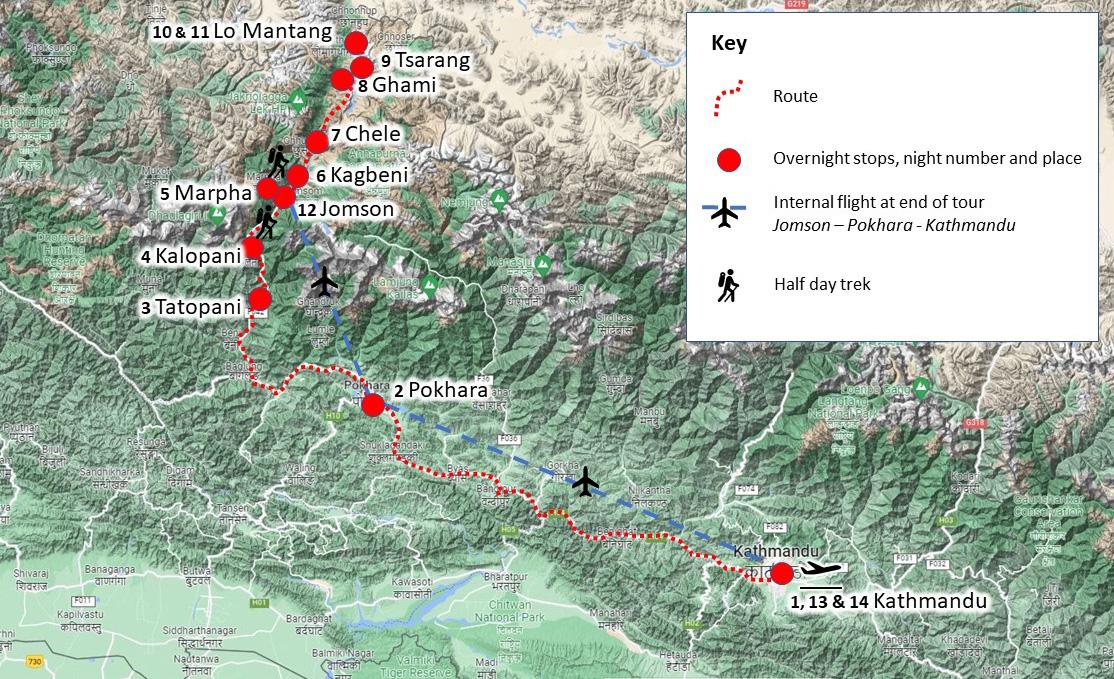Nepal
The Roof of the World
Kathmandu to Kathmandu
Exclusive small group tour. Number of participants: 10-14
Dates TBC
15 Days/14 Nights
£TBC
Prices are per person, based on 2 people sharing a room, bed & breakfast accommodation, with lunches & dinners included on trekking days (8 in total).
Single supplement applies - please make contact for details.
This geological journey through Nepal really is a journey to the roof of the world. You can see how the world's tallest mountains, the Himalaya, are continuing to grow as India collides into Asia. Not only are folded, faulted and metamorphosed rocks visible, but fabulous fossils too, which were once on the margins ofa long-since closed-up ocean floor. The journey takes you up the Kali Gandaki Gorge, the deepest gorge in the world, to one of Nepal's remotest areas, the Upper Mustang Valley, where you can experience not only the stunning geology but also the vibrant Tibetan culture.
**Whilst this tour is mainly vehicle-based, there are a number of treks included in the itinerary, so a good level of fitness is required. The longest treks are half day treks, but we will ensure that they are paced to to suit the fitness levels of all participants. The tour is also conducted at altitude (maximum overnight elevation of 3,840m), however, the journey northwards takes place over nine days, allowing plenty of time for acclimatisation.**
If you have any concerns, please feel free to contact us to discuss.
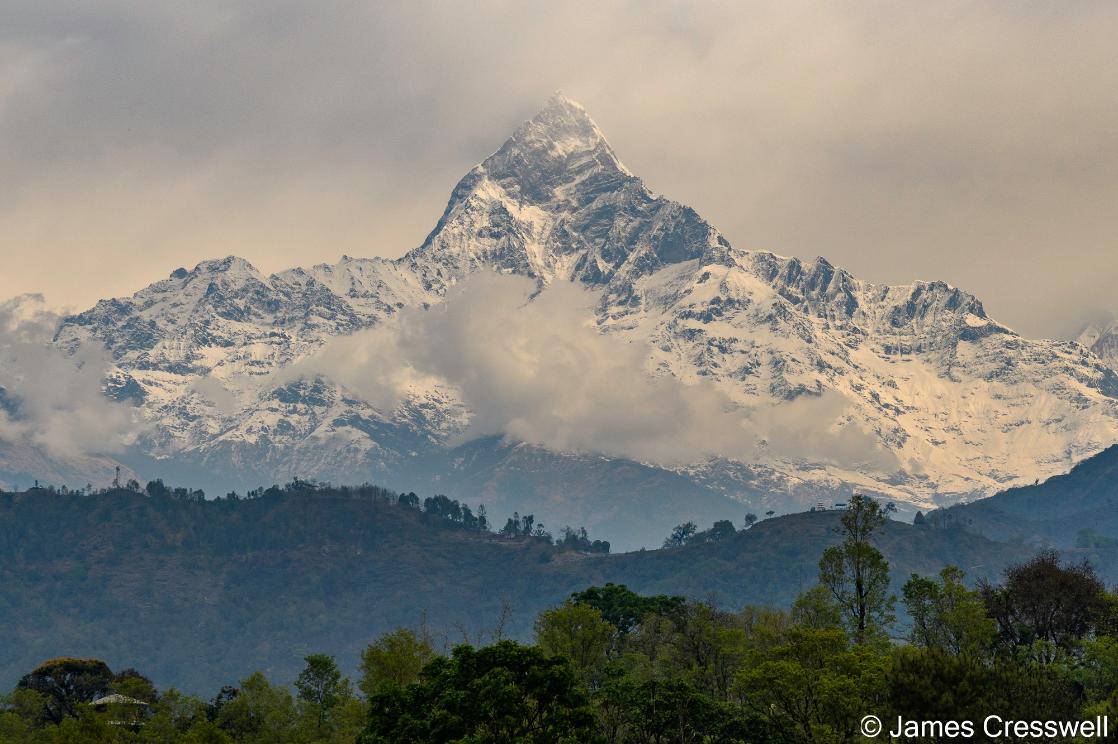
View northwards from Pokhara of Fishtail Mountain and the Annapurna Range (Day 3)
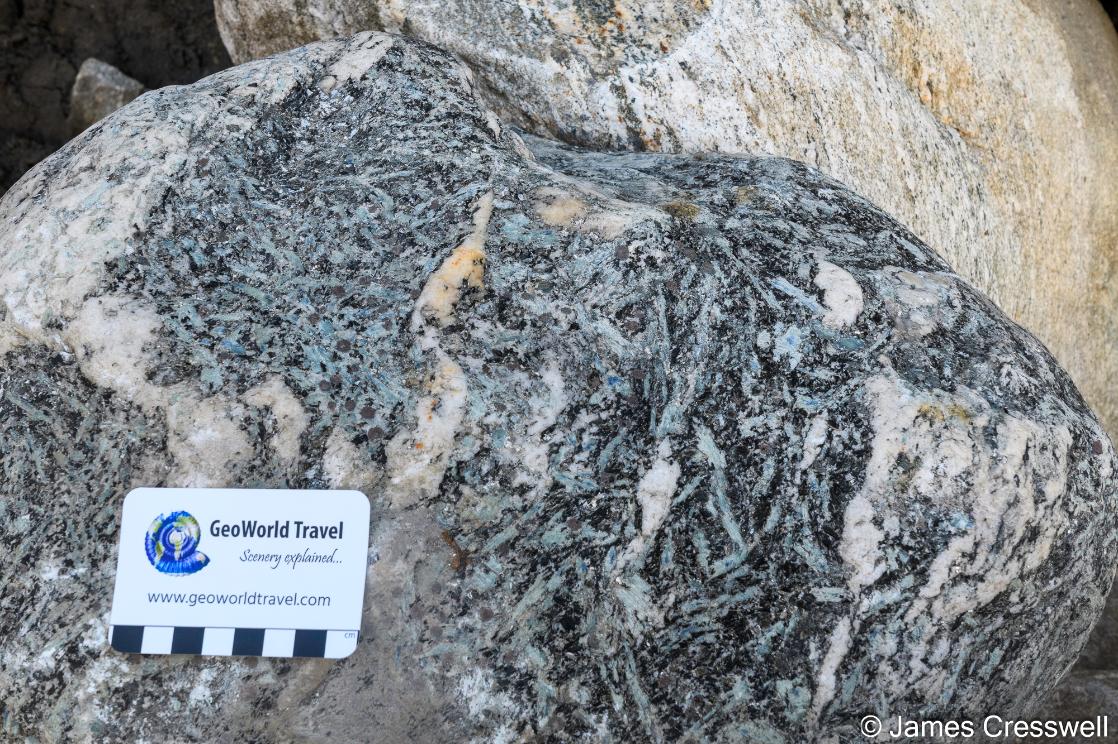
Kyanite seen in river boulders at Tatopani (Day 3)
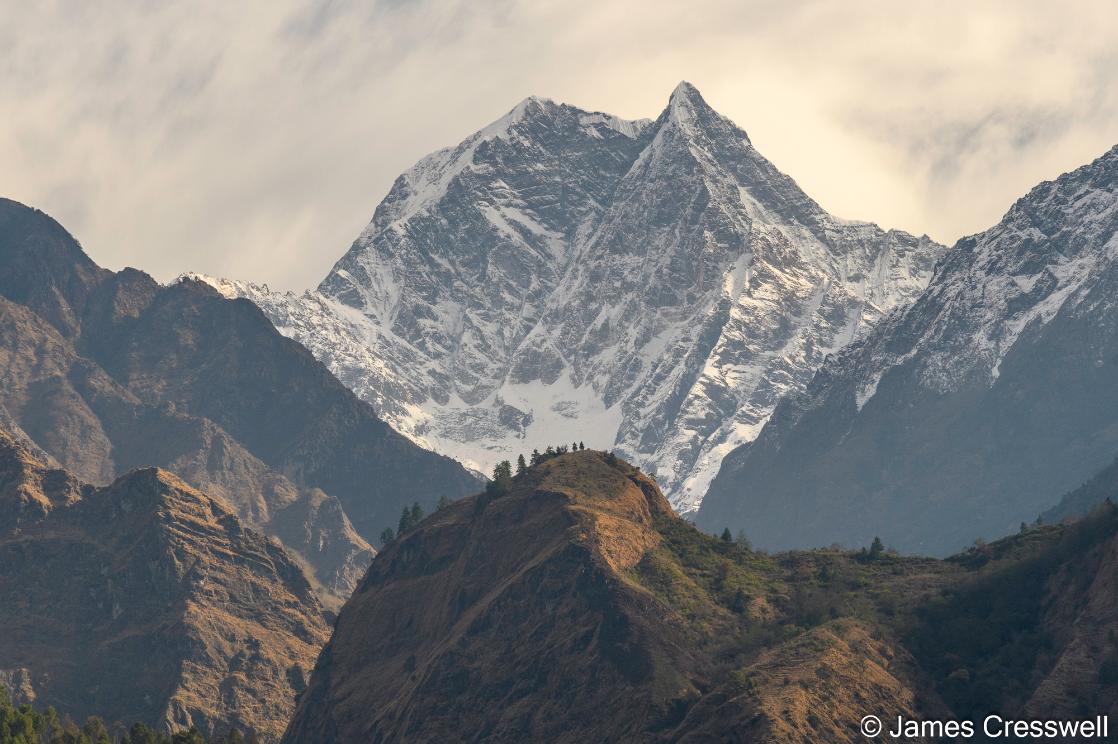
Views of Mount Nilgiri (Day 4)
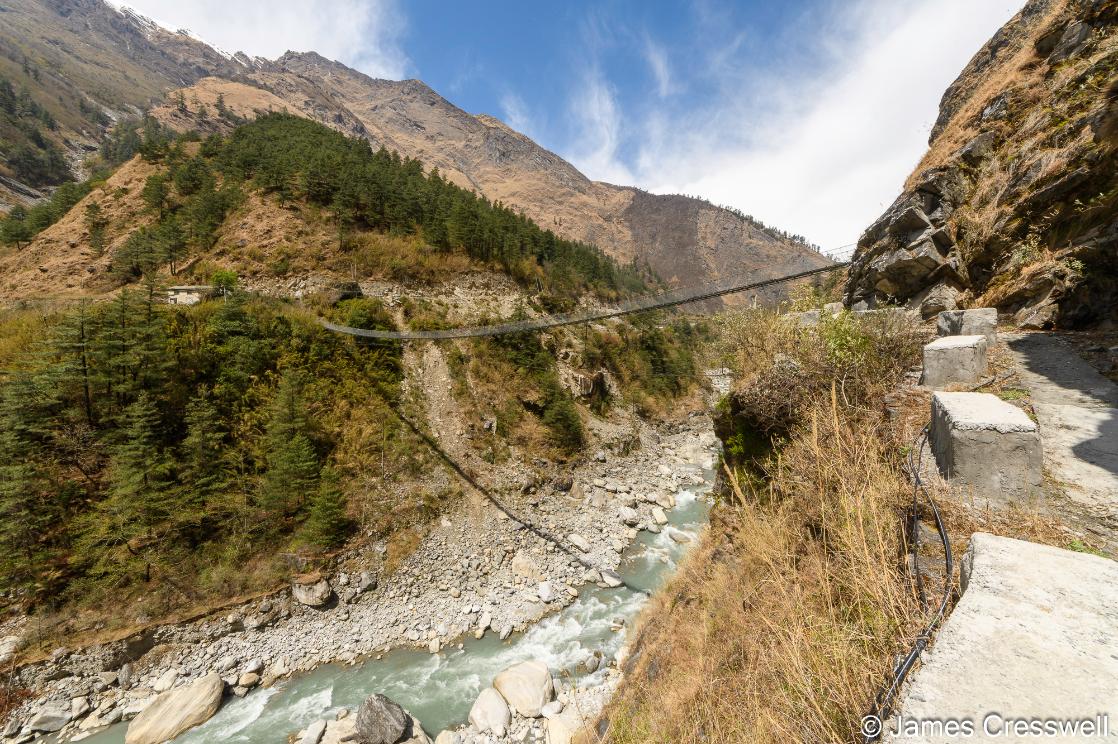
Part of the Annapurna Circuit near Ghasa (Day 4)
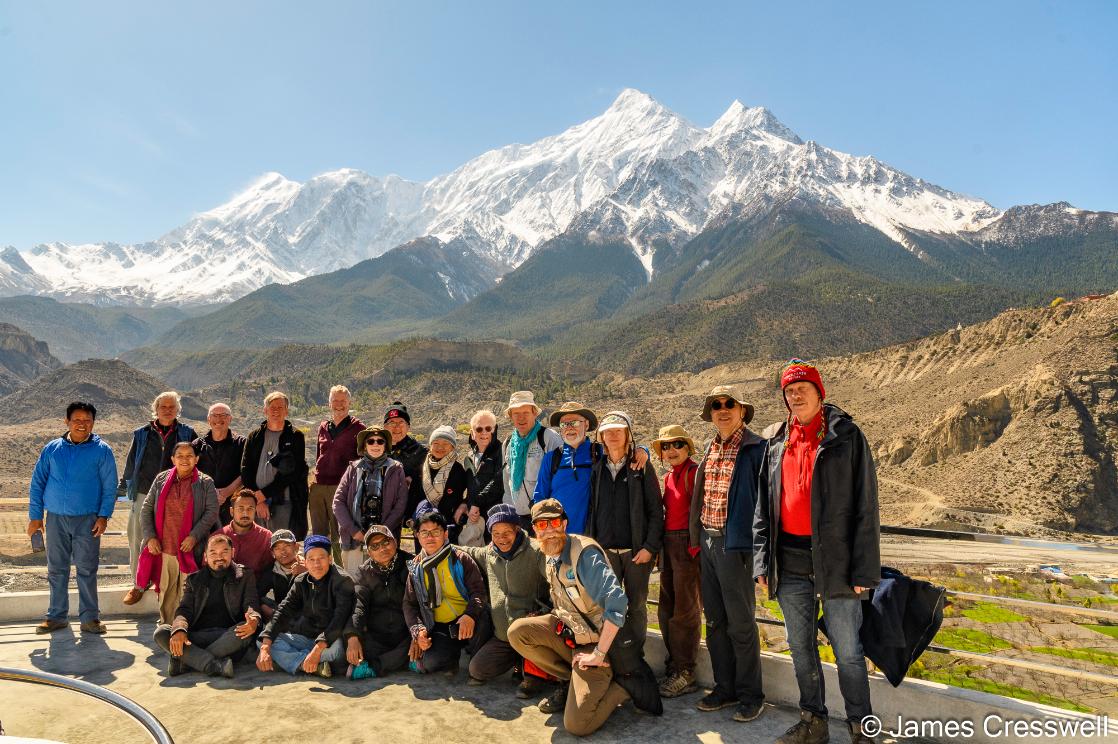
The group at Syang (Day6)
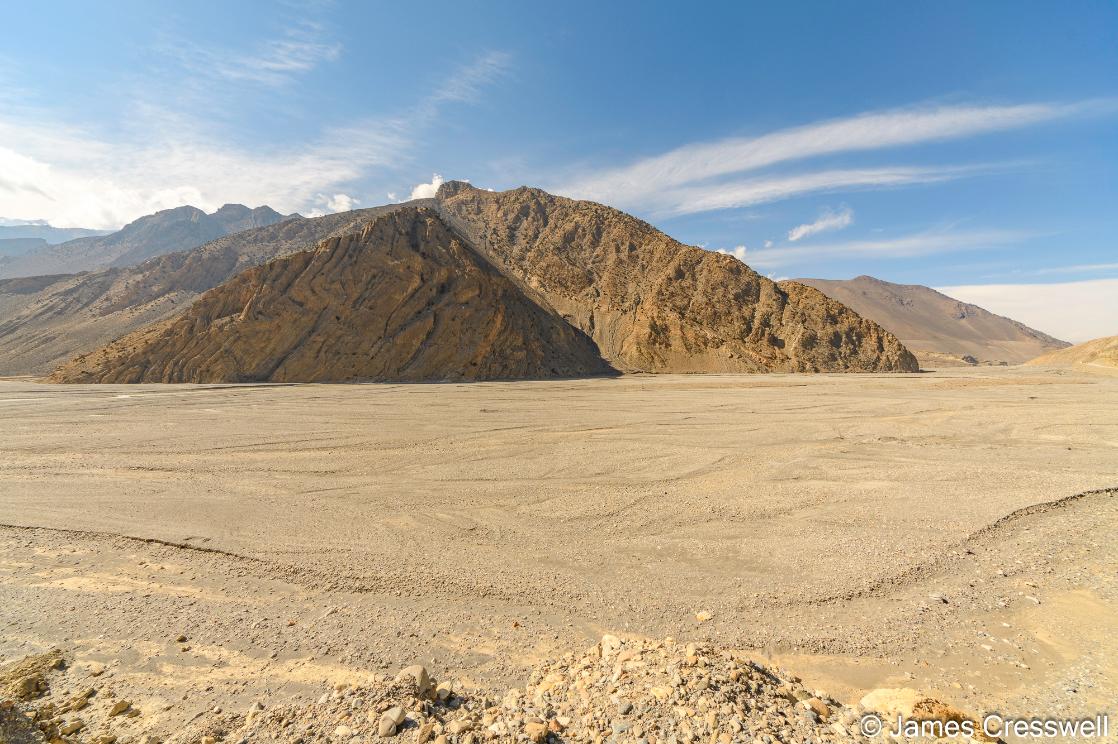
Lupra Fault (Day 6)
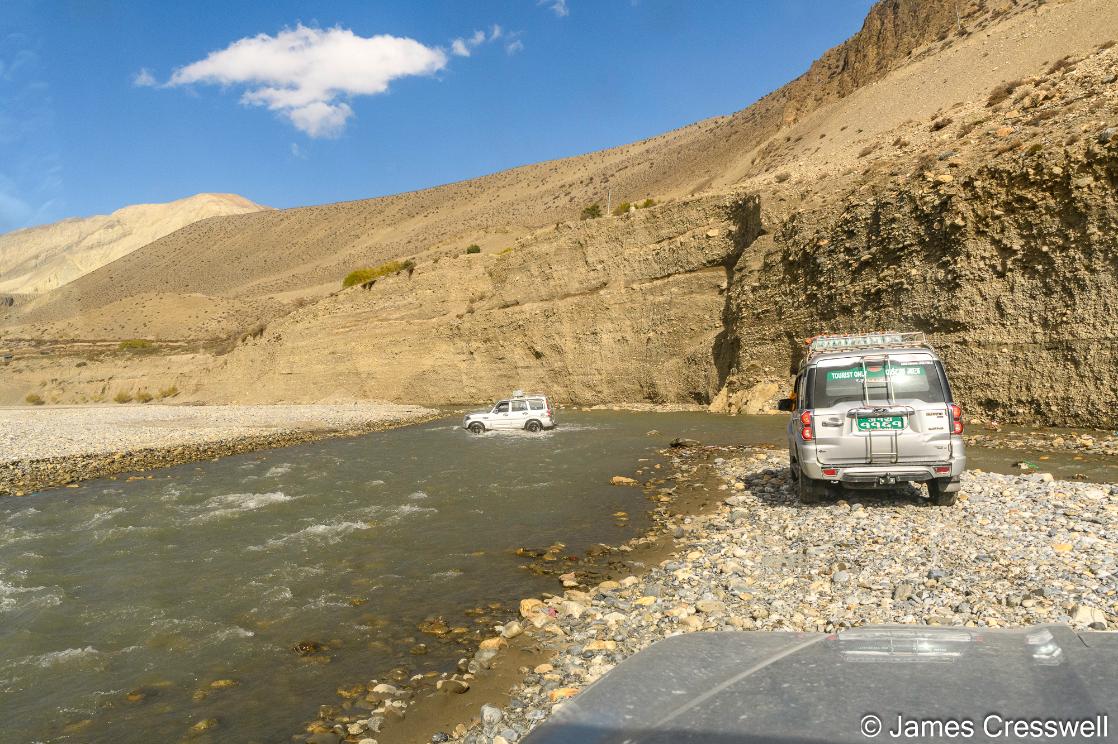
Fording the Kali Gandaki river near Kagbeni(Day 6)
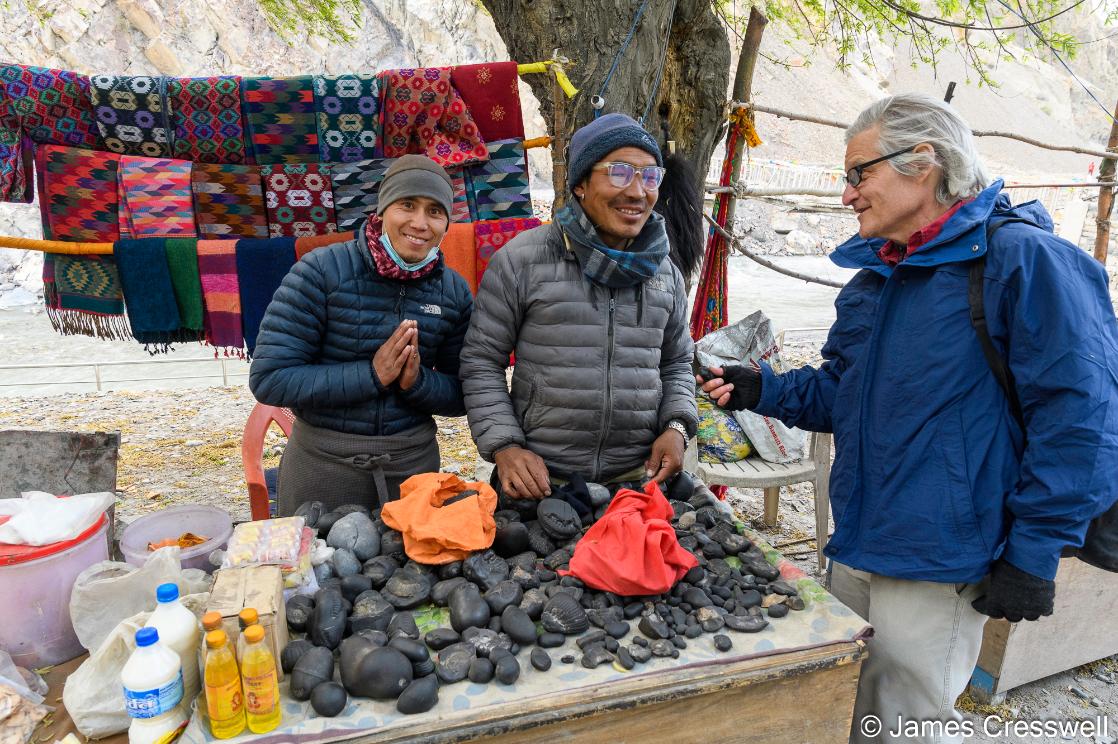
Buying ammonites known as Shaligrams at Kagbeni (Day 6)
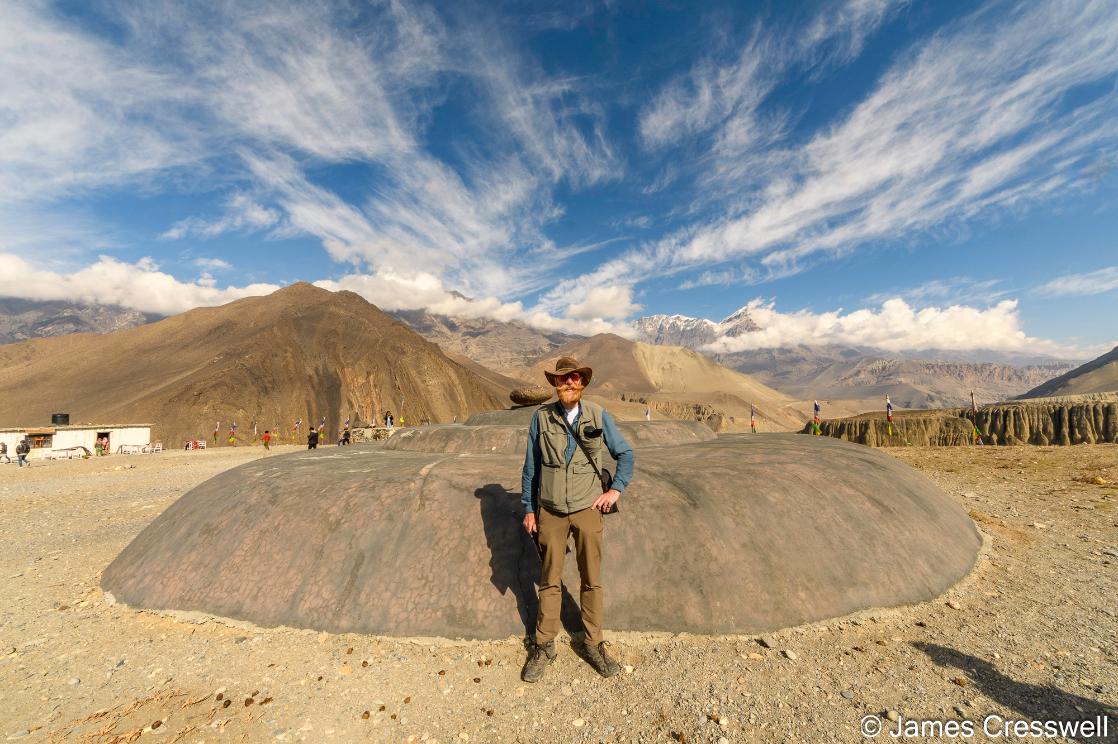
James Cresswell in front of a giant shaligram sculpture (Day 7)
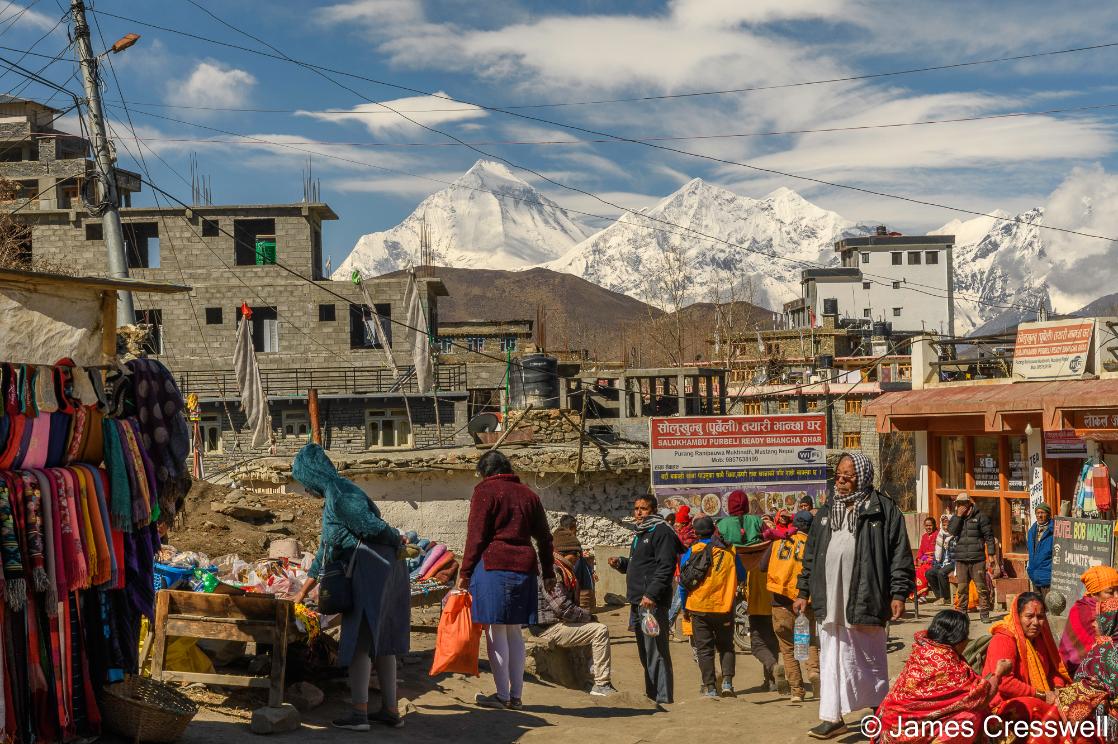
Muktinah (Day 7)
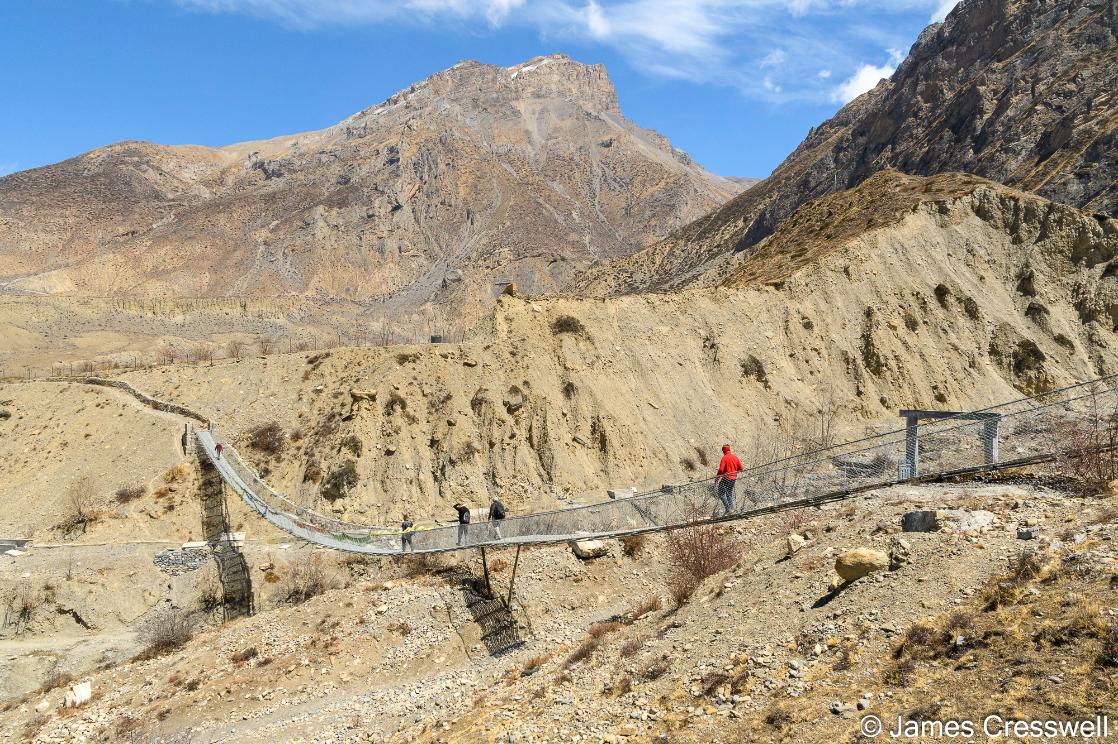
A short trek on part of the Annapurna Circuit (Day 7)
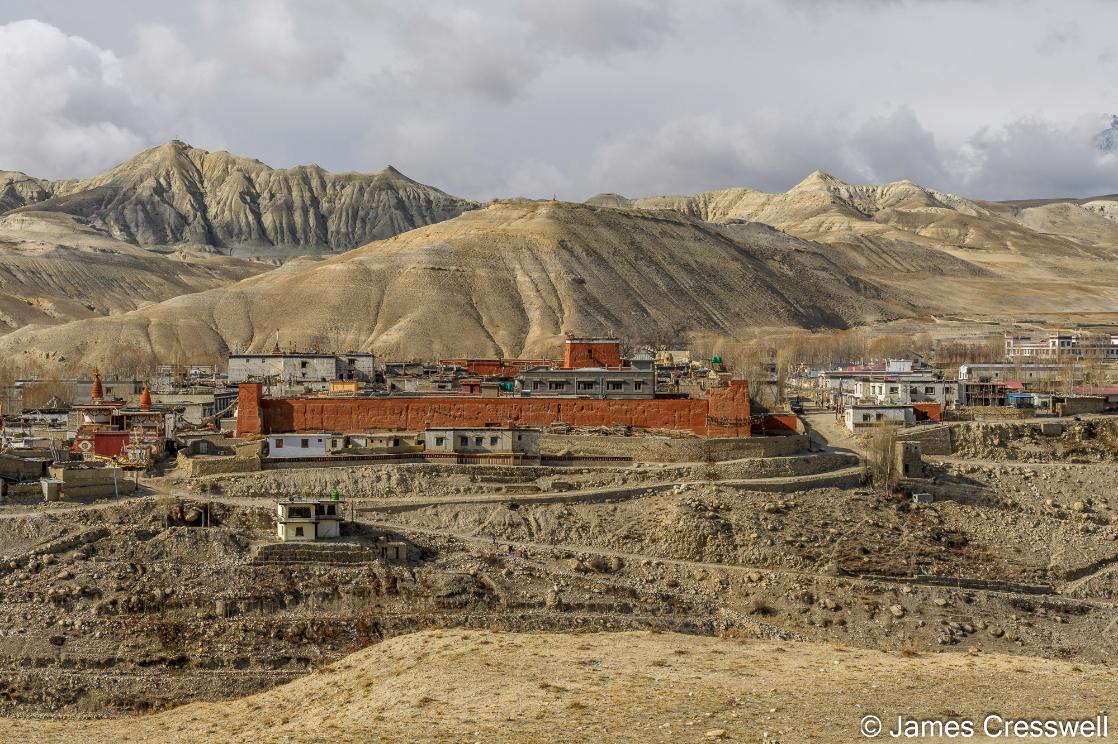
Lo Manthang (Day 10)
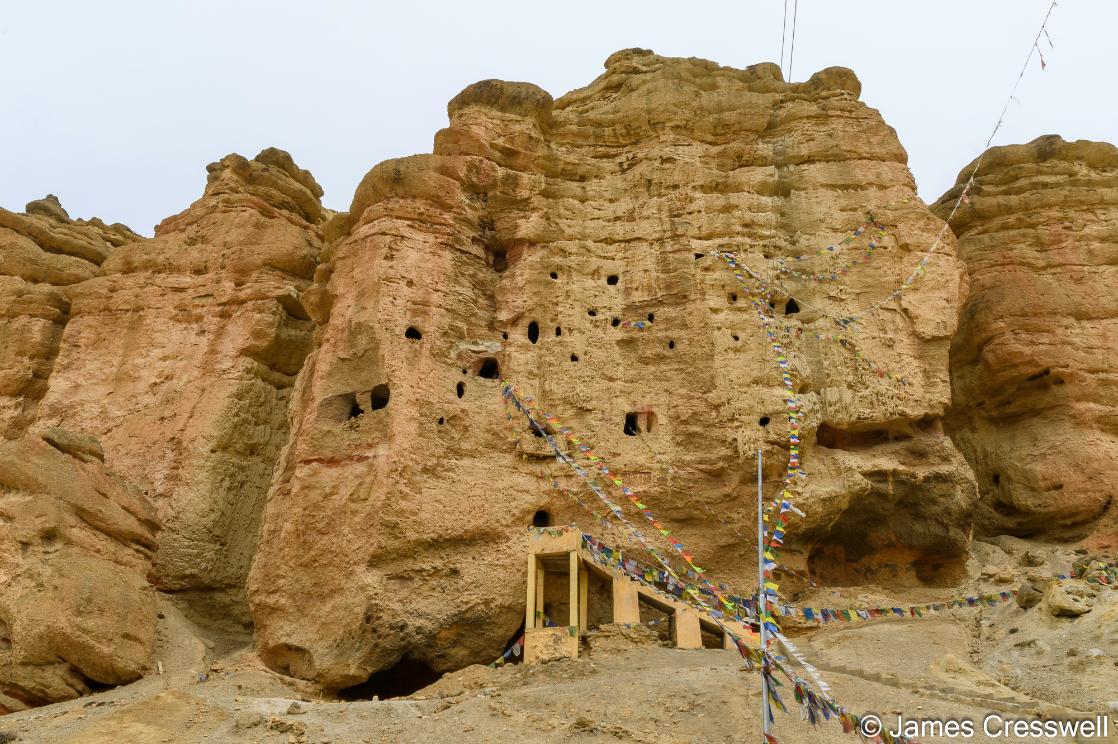
Choser Caves (Day 11)
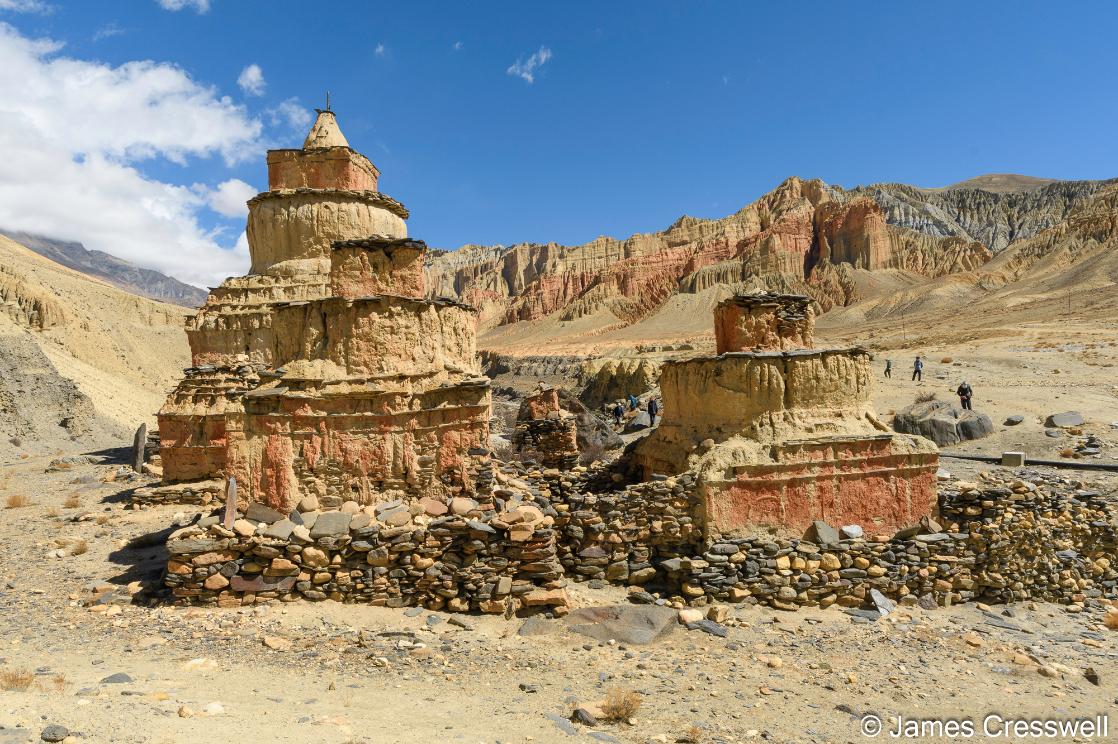
Multicoloured strata of the Thakkhola Graben at Ghami (Day 12)
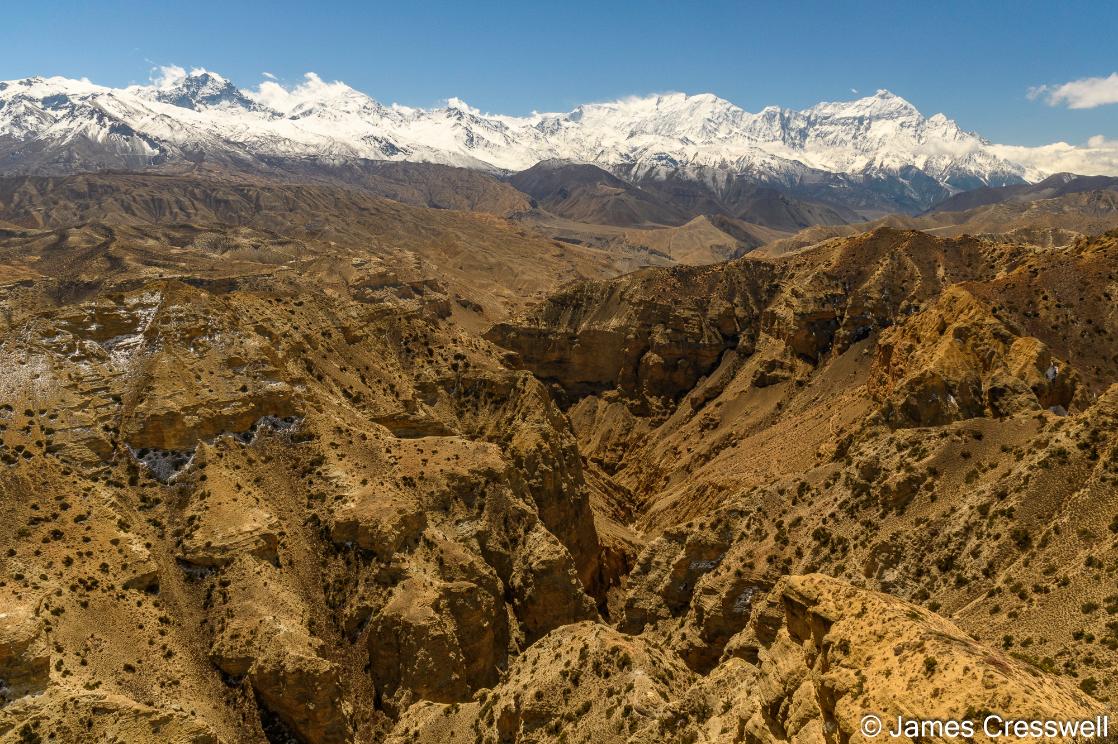
Syanboche (Day 12)
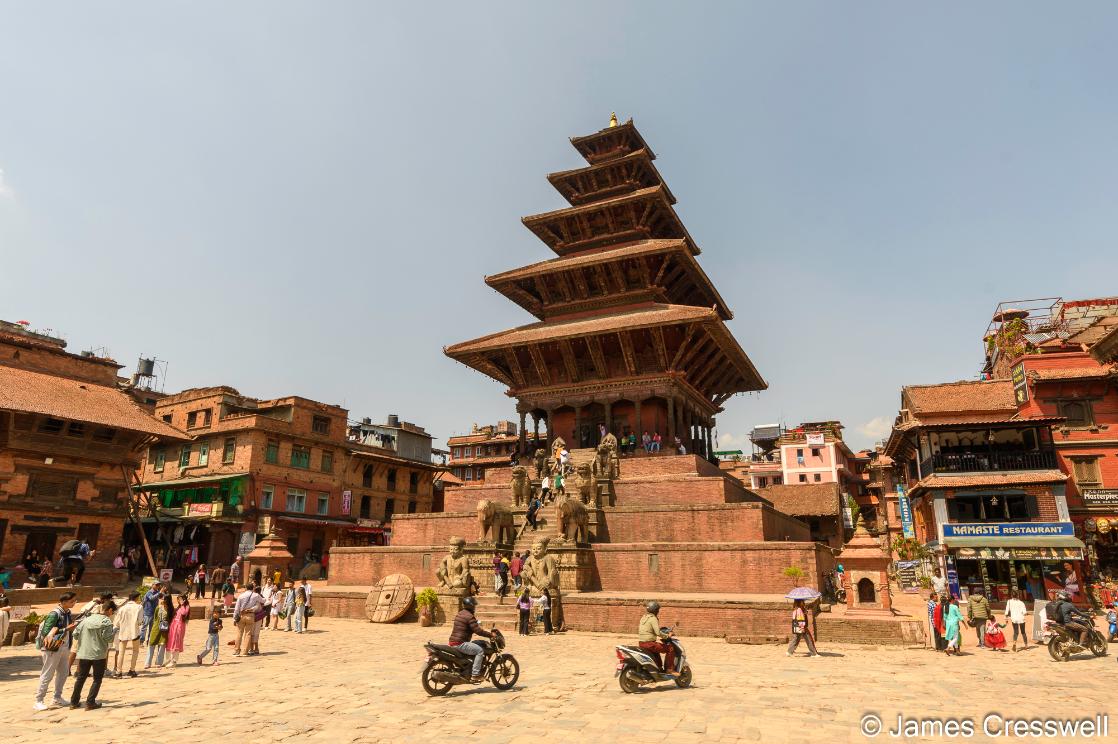
Kathmandu (Day 14)
Itinerary
PLEASE NOTE: All itineraries are for guidance only. Programmes may vary depending on local weather conditions. While the standard of accommodation in the towns is very good, local guesthouse accommodation in the mountains will be the best available (in some cases that can be basic with less than perfect plumbing and electrics). There will be five days on which treks are offered but only two days when participation in the trek is required.
Day 1: Arrive in Kathmandu, the capital of Nepal. You will be greeted by an airport pick-up service and taken to the Kathmandu Guest House hotel (KGH)
Day 2: To Pokhara. After an early breakfast, we drive westwards to Pokhara through a subtropical region of Nepal, passing from Quaternary lacustrine sediments of the Kathmandu Basin to crystalline rocks of the Kathmandu Nappe and on into low grade metamorphics of the Lesser Himalayan Series. Among these are Precambrian rippled quartzites viewed near a Gurkha Village a short distance beyond Mugling Bridge. Overnight at the luxurious Hotel Fish Tail Lodge overlooking the Phewa Lake
Day 3: To Tatopani. At Pokhara view mountains of Annapurna Range and visit limestone caves. An option exists to get up early and see the sun rise at Sarangkot just outside Pokhara. Drive to Tatopani via Beni following the Kali Gandaki river upstream much of the way. Metamorphic rocks of the Lesser Himalayan Series and Quaternary lake deposits and landslides can be seen along the way. Stay night at Hot Springs Hotel giving easy access to the hot springs of Tatopani
Day 4: To Kalopani. Journey from Tatopani to Kalopani with spectacular views of the main Kali Gandaki gorge. Crossing the Chomrong Thrust we pass into higher grade metamorphic rocks of the Greater Himalayan Series with abundant garnet schists, gneisses, calc silicates and evidence of anatexis. We commenced the day in sub-tropical vegetation but at Kalopani we are in a temperate climatic zone. A voluntary trek is along the Annapurna Circuit from Dana to Ghasa broadly parallel to the road. Stay night at Angel Hotel
Day 5: To Marpha. Circular trek to Kunjo away from the main valley to see Quaternary deposits and more high grade metamorphic rocks. This is a 10 km trek which can be shortened if required. Drive from Kalopani to Marpha. Crossing the South Tibetan Detachment we see dramatic folded strata of the Tethyan Himalayan Series in the hill sides, all virtually un-metamorphosed. Among these are the folded Lower Palaeozoic Nilgiri limestones. Marph is the ‘place of the apples’ where the vegetation includes pine, cypress and juniper forest. The apples are used for apple juice and apple brandy. Stay night at Marpha Palace hotel
Day 6: To Kagbeni. Drive to Jomsom via the Tibetan refugee settlement of Syang where we take morning tea. Fabulous views of Mount Nilgiri North (7061m). Quaternary lake deposits are present on the hill sides. Passing beautiful water-worn rocks in the river bed we trek from Jomsom to Kagbeni, known as the ‘Gateway to Mustang’, through deformed Mesozoic strata of the Tethyan Himalayan Series. The trek is 11kms with less than 100m height gain and usually takes about 5 hours. Impressively folded rocks are visible in the cliffs on either side of the wide valley. We pause to study the Lupra Fault and the inverted strata of a large-scale recumbent fold. Dramatic mountain scenery amidst arid ‘Tibetan’ landscape. Search for Jurassic ammonites in the river bed. Visit Lower Cretaceous plant-bearing deltaics on river margin at Kagbeni (2,804m). Observe Quaternary fluvial, lacustrine and alluvial fan deposits. Overnight at the Yakdonald Guesthouse, Kagbeni, where yakburgers are on the menu.
Day 7: To Chele (Mustang). Journey from Kagbeni to Chele via the pilgrimage centre of Muktinath (3,710m). This is a major local pilgrimage site, with numerous temples. Visit these temples and the ‘everlasting flame’, a natural methane flame that has burned for centuries. Spectacular views of folded strata in the hills in front of Dhaulagiri (8167m). Voluntary trek to Jhong, a medieval village and back to Kagbeni where the jeeps are rejoined (4 hours). Jurassic ammonite-bearing nodules (holy ‘shaligrams’) can be collected from the hillsides and streams around Muktinath and Kagbeni. The journey proceeds by road onwards into the restricted region of Mustang, through Chhusang, a typical Tibetan settlement, to Chele. Our route allows the study of dramatic cliffs on either side of deep ravines. These expose Cretaceous clastics with plant remains and Mio-pliocene terrestrial deposits of the Thhakola Graben. We discuss the origins of this extensional graben. Stay night at the Mustang Gateway Guest House of Chele.
Day 8: To Ghami. Drive from Chele to Ghami via Syanboche studying the Neogene sedimentary fill and basin boundary faults of the Thakkhola Graben including the ‘painted rocks’. At Syanboche exposure of Neogene lacustrine microbial mats with oncolites. Stay night at Royal Mustang Guest House
Day 9: To Tsarang. Drive from Ghami to Dhakmar and on to Tsarang for visit to local temple and fort. At Dhakmar view spectacular scenery and discus the origin of the brilliant red and ochre cliffs. Stay night at Mya Hotel
Day 10: To Lo Manthang. Visit Ghar Gumba monastery involving a short walk. Boulders of leucogranite and high grade metamorphic rock along this path give evidence of the geology to the northwest on the west side of the basin bounding fault. Drive to Lo Manthang (3,840m) observing lacustrine deposits within the colourful stratified fluvial sandstones. This Neogene fill of the basin forms dramatic cliffs. Voluntary trek taking the path from Ghar Gumba to Lo Manthang. Two nights at Tashi Delek Guest House
Day 11: At Lo Manthang. Visit temples within the old city walls of Lo Manthang. Drive north via river crossing near Kimalang where boulders of leucogranite and augen gneiss give further evidence of the Northern Himalayan crystalline rocks northwest of the basin bounding fault. Travel on to the dramatic Choser caves and climb inside these sandstones to see the life of the hermit. We spend a second night in Lo Manthang
Day 12: To Jomsom. Drive back south to Jomsom taking lunch at the Red House in Kagbeni. At Jomsom visit small museum with good displays about the natural history of Mustang. Splendid views of mountains surrounding the small airstrip. Jomsom is located partly on Quaternary glacial deposits and partly on lacustrine deposits, visible on both banks of the river. In the cliffs behind, major folds and faults can be seen the Jurassic limestones. Night at Neeru Guest House.
Day 13: To Kathmandu. Fly Jomsom to Pokhara, a spectacular flight through the mountains, and on to Kathmandu. Panoramic views of the mountains can be seen on the flight to Kathmandu. Two nights at Kathmandu Guest House
Day 14: In Kathmandu. Visit some of the following: the Museum of Fossil Mammals from the Siwaliks, Bhaktapur Durbar Square, Swayambhunaath Temple (the monkey temple) and the UNESCO Pashupatinath Temple
Day 15: Depart Kathmandu. Transfer to Kathmandu Airport for flight home.
INCLUDED
Geological guiding
Bed & breakfast accommodation in hotels
Full board in trek lodges (8 nights)
Shuttle to and from airport
Upper Mustang special trekking permit (USD $500)
NOT INCLUDED
Flights to and from Nepal
Internal Jomson-Kathmandu flight at the end of the tour (approx. USD $250). This must be paid to local agent at the start of the tour.
Lunches and dinners (on hotel nights - 6 nights)
Alcohol and soft drinks
Photo galleries and reviews of previous trips
Nepal - The Roof of the World (2023)
"I thoroughly enjoyed our adventurous journey and the sights unique to Nepal! I encountered lush green spaces, bustling motorways, and ornate temples of Kathmandu and traversed the rugged trekking route by jeep as we ascended from Pokhara into the high desert of the Upper Mustang. Our exploration took us adjacent to the Tibetan Plateau, 20 km from the Tibetan border as we discovered an ancient culture on the precipice of change.
The scenery and outcrops spanned the geologic time from Proterozoic to Quaternary with evidence at every turn to the complex processes of building the high peaks and deep gorges of the tallest mountain range of our planet. Dr Daniel Clark-Lowes, our primary guide, gave a concise, insightful narrative of all we surveyed. Our quest presented not only the challenge of interpretation of the features of the terrain but also piqued personal grit to acclimatise and find one's own rhythm in high altitude and cold clime.
The accommodations beyond Pokhara capture the essence of life in this remote wilderness, lacking reliable lowland conveniences but offering hot beverages and meals, shelter from the wind, and safety for the guests - all welcome hospitality after a day's bumpy ride. Surrounded by lofty, snow-covered peaks, one can almost see the visage of fearless mountaineers upon sheer mountain faces which alights the soul to flight.
Purchasing goods and services within Nepal are low cost - barter is the norm, and the people as well as the children are friendly and welcoming, curious about visitors to their communities. One word of wisdom to keep in mind when planning your extra days, hire local drivers, do not attempt to rent a car and drive on your own! I highly recommend LP Sherpa - Family Alpine Trek and Expedition - who will customize an itinerary to your needs, the family took exceptionally good care of our group throughout our stay. Surrounded by rugged scenery and bright, curious minds of travelling companions, this trip was wholly satisfying. I am looking forward to my next adventure with GeoWorld Travel, many places, so many adventures."

